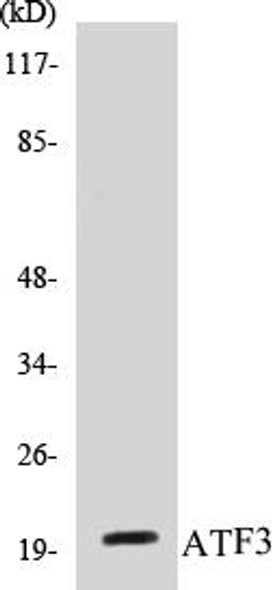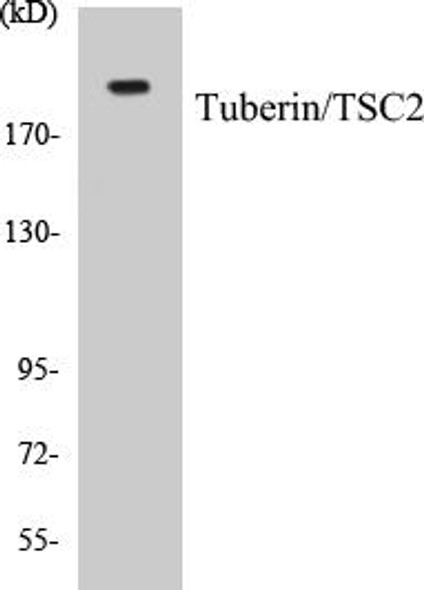Description
Proteasome alpha3 Colorimetric Cell-Based ELISA Kit
The Proteasome Alpha3 Colorimetric Cell-Based ELISA Kit from Assay Genie is a cutting-edge solution for accurately measuring proteasome alpha3 levels in cell lysates. This kit is designed with high sensitivity and specificity, ensuring precise and reliable results for a variety of research applications.Proteasome alpha3 is a key component of the proteasome complex, playing a critical role in protein degradation and maintaining cellular homeostasis. Dysregulation of proteasome activity has been linked to various diseases including cancer, autoimmune disorders, and neurodegenerative conditions, highlighting the importance of studying proteasome alpha3 levels in research.
With the Proteasome Alpha3 Colorimetric Cell-Based ELISA Kit, researchers can unlock valuable insights into proteasome alpha3 expression, furthering our understanding of cellular processes and disease mechanisms. Trust Assay Genie for high-quality, innovative research tools to advance your scientific investigations.
| Product Name: | Proteasome alpha3 Colorimetric Cell-Based ELISA |
| Product Code: | CBCAB00833 |
| ELISA Type: | Cell-Based |
| Target: | Proteasome alpha3 |
| Reactivity: | Human, Mouse, Rat |
| Dynamic Range: | > 5000 Cells |
| Detection Method: | Colorimetric 450 nmStorage/Stability:4°C/6 Months |
| Format: | 96-Well Microplate |
The Proteasome alpha3 Colorimetric Cell-Based ELISA Kit is a convenient, lysate-free, high throughput and sensitive assay kit that can detect Proteasome alpha3 protein expression profile in cells. The kit can be used for measuring the relative amounts of Proteasome alpha3 in cultured cells as well as screening for the effects that various treatments, inhibitors (ie siRNA or chemicals), or activators have on Proteasome alpha3.
Qualitative determination of Proteasome alpha3 concentration is achieved by an indirect ELISA format. In essence, Proteasome alpha3 is captured by Proteasome alpha3-specific primary antibodies while the HRP-conjugated secondary antibodies bind the Fc region of the primary antibody. Through this binding, the HRP enzyme conjugated to the secondary antibody can catalyze a colorimetric reaction upon substrate addition. Due to the qualitative nature of the Cell-Based ELISA, multiple normalization methods are needed:
| 1. | A monoclonal antibody specific for human GAPDH is included to serve as an internal positive control in normalizing the target absorbance values. |
| 2. | Following the colorimetric measurement of HRP activity via substrate addition, the Crystal Violet whole-cell staining method may be used to determine cell density. After staining, the results can be analysed by normalizing the absorbance values to cell amounts, by which the plating difference can be adjusted. |
| Database Information: | Gene ID: 5702, UniProt ID: P17980, OMIM: 186852, Unigene: Hs.250758 |
| Gene Symbol: | PSMC3 |
| Sub Type: | None |
| UniProt Protein Function: | RPT5: The 26S protease is involved in the ATP-dependent degradation of ubiquitinated proteins. The regulatory (or ATPase) complex confers ATP dependency and substrate specificity to the 26S complex. In case of HIV-1 infection, suppresses Tat-mediated transactivation. Belongs to the AAA ATPase family. |
| UniProt Protein Details: | Protein type:Proteasome complex; Transcription, coactivator/corepressor; Nuclear receptor co-regulator Chromosomal Location of Human Ortholog: 11p11.2 Cellular Component: proteasome complex; nucleoplasm; membrane; perinuclear region of cytoplasm; nucleus; cytosol Molecular Function:protein binding; ATPase activity; transcription coactivator activity; transcription corepressor activity; ATP binding Biological Process: positive regulation of ubiquitin-protein ligase activity during mitotic cell cycle; negative regulation of ubiquitin-protein ligase activity during mitotic cell cycle; blastocyst development; protein polyubiquitination; viral reproduction; apoptosis; antigen processing and presentation of exogenous peptide antigen via MHC class I, TAP-dependent; DNA damage response, signal transduction by p53 class mediator resulting in cell cycle arrest; regulation of apoptosis; antigen processing and presentation of peptide antigen via MHC class I; regulation of ubiquitin-protein ligase activity during mitotic cell cycle; anaphase-promoting complex-dependent proteasomal ubiquitin-dependent protein catabolic process; antigen processing and presentation of exogenous peptide antigen via MHC class I; gene expression; mitotic cell cycle; regulation of amino acid metabolic process; G1/S transition of mitotic cell cycle; negative regulation of apoptosis |
| NCBI Summary: | The 26S proteasome is a multicatalytic proteinase complex with a highly ordered structure composed of 2 complexes, a 20S core and a 19S regulator. The 20S core is composed of 4 rings of 28 non-identical subunits; 2 rings are composed of 7 alpha subunits and 2 rings are composed of 7 beta subunits. The 19S regulator is composed of a base, which contains 6 ATPase subunits and 2 non-ATPase subunits, and a lid, which contains up to 10 non-ATPase subunits. Proteasomes are distributed throughout eukaryotic cells at a high concentration and cleave peptides in an ATP/ubiquitin-dependent process in a non-lysosomal pathway. An essential function of a modified proteasome, the immunoproteasome, is the processing of class I MHC peptides. This gene encodes one of the ATPase subunits, a member of the triple-A family of ATPases that have chaperone-like activity. This subunit may compete with PSMC2 for binding to the HIV tat protein to regulate the interaction between the viral protein and the transcription complex. A pseudogene has been identified on chromosome 9. [provided by RefSeq, Jul 2008] |
| UniProt Code: | P17980 |
| NCBI GenInfo Identifier: | 20532406 |
| NCBI Gene ID: | 5702 |
| NCBI Accession: | P17980.3 |
| UniProt Secondary Accession: | P17980,Q3B757, Q3B865, Q53HU5, Q6GPG8, Q6IBS1, Q96HD3 B2R8V1, |
| UniProt Related Accession: | P17980 |
| Molecular Weight: | 439 |
| NCBI Full Name: | 26S protease regulatory subunit 6A |
| NCBI Synonym Full Names: | proteasome (prosome, macropain) 26S subunit, ATPase, 3 |
| NCBI Official Symbol: | PSMC3 |
| NCBI Official Synonym Symbols: | TBP1 |
| NCBI Protein Information: | 26S protease regulatory subunit 6A; TBP-1; Tat-binding protein 1; proteasome subunit P50; proteasome 26S subunit ATPase 3; 26S proteasome AAA-ATPase subunit RPT5; human immunodeficiency virus tat transactivator binding protein-1 |
| UniProt Protein Name: | 26S protease regulatory subunit 6A |
| UniProt Synonym Protein Names: | 26S proteasome AAA-ATPase subunit RPT5; Proteasome 26S subunit ATPase 3; Proteasome subunit P50; Tat-binding protein 1; TBP-1 |
| Protein Family: | 26S protease regulatory |
| UniProt Gene Name: | PSMC3 |
| UniProt Entry Name: | PRS6A_HUMAN |
| Component | Quantity |
| 96-Well Cell Culture Clear-Bottom Microplate | 2 plates |
| 10X TBS | 24 mL |
| Quenching Buffer | 24 mL |
| Blocking Buffer | 50 mL |
| 15X Wash Buffer | 50 mL |
| Primary Antibody Diluent | 12 mL |
| 100x Anti-Phospho Target Antibody | 60 µL |
| 100x Anti-Target Antibody | 60 µL |
| Anti-GAPDH Antibody | 60 µL |
| HRP-Conjugated Anti-Rabbit IgG Antibody | 12 mL |
| HRP-Conjugated Anti-Mouse IgG Antibody | 12 mL |
| SDS Solution | 12 mL |
| Stop Solution | 24 mL |
| Ready-to-Use Substrate | 12 mL |
| Crystal Violet Solution | 12 mL |
| Adhesive Plate Seals | 2 seals |
The following materials and/or equipment are NOT provided in this kit but are necessary to successfully conduct the experiment:
- Microplate reader able to measure absorbance at 450 nm and/or 595 nm for Crystal Violet Cell Staining (Optional)
- Micropipettes with capability of measuring volumes ranging from 1 µL to 1 ml
- 37% formaldehyde (Sigma Cat# F-8775) or formaldehyde from other sources
- Squirt bottle, manifold dispenser, multichannel pipette reservoir or automated microplate washer
- Graph paper or computer software capable of generating or displaying logarithmic functions
- Absorbent papers or vacuum aspirator
- Test tubes or microfuge tubes capable of storing ≥1 ml
- Poly-L-Lysine (Sigma Cat# P4832 for suspension cells)
- Orbital shaker (optional)
- Deionized or sterile water
*Note: Protocols are specific to each batch/lot. For the correct instructions please follow the protocol included in your kit.
| Step | Procedure |
| 1. | Seed 200 µL of 20,000 adherent cells in culture medium in each well of a 96-well plate. The plates included in the kit are sterile and treated for cell culture. For suspension cells and loosely attached cells, coat the plates with 100 µL of 10 µg/ml Poly-L-Lysine (not included) to each well of a 96-well plate for 30 minutes at 37°C prior to adding cells. |
| 2. | Incubate the cells for overnight at 37°C, 5% CO2. |
| 3. | Treat the cells as desired. |
| 4. | Remove the cell culture medium and rinse with 200 µL of 1x TBS, twice. |
| 5. | Fix the cells by incubating with 100 µL of Fixing Solution for 20 minutes at room temperature. The 4% formaldehyde is used for adherent cells and 8% formaldehyde is used for suspension cells and loosely attached cells. |
| 6. | Remove the Fixing Solution and wash the plate 3 times with 200 µL 1x Wash Buffer for five minutes each time with gentle shaking on the orbital shaker. The plate can be stored at 4°C for a week. |
| 7. | Add 100 µL of Quenching Buffer and incubate for 20 minutes at room temperature. |
| 8. | Wash the plate 3 times with 1x Wash Buffer for 5 minutes each time. |
| 9. | Add 200 µL of Blocking Buffer and incubate for 1 hour at room temperature. |
| 10. | Wash 3 times with 200 µL of 1x Wash Buffer for 5 minutes each time. |
| 11. | Add 50 µL of 1x primary antibodies (Anti-Proteasome alpha3 Antibody and/or Anti-GAPDH Antibody) to the corresponding wells, cover with Parafilm and incubate for 16 hours (overnight) at 4°C. If the target expression is known to be high, incubate for 2 hours at room temperature. |
| 12. | Wash 3 times with 200 µL of 1x Wash Buffer for 5 minutes each time. |
| 13. | Add 50 µL of 1x secondary antibodies (HRP-Conjugated AntiRabbit IgG Antibody or HRP-Conjugated Anti-Mouse IgG Antibody) to corresponding wells and incubate for 1.5 hours at room temperature. |
| 14. | Wash 3 times with 200 µL of 1x Wash Buffer for 5 minutes each time. |
| 15. | Add 50 µL of Ready-to-Use Substrate to each well and incubate for 30 minutes at room temperature in the dark. |
| 16. | Add 50 µL of Stop Solution to each well and read OD at 450 nm immediately using the microplate reader. |
(Additional Crystal Violet staining may be performed if desired – details of this may be found in the kit technical manual.)






